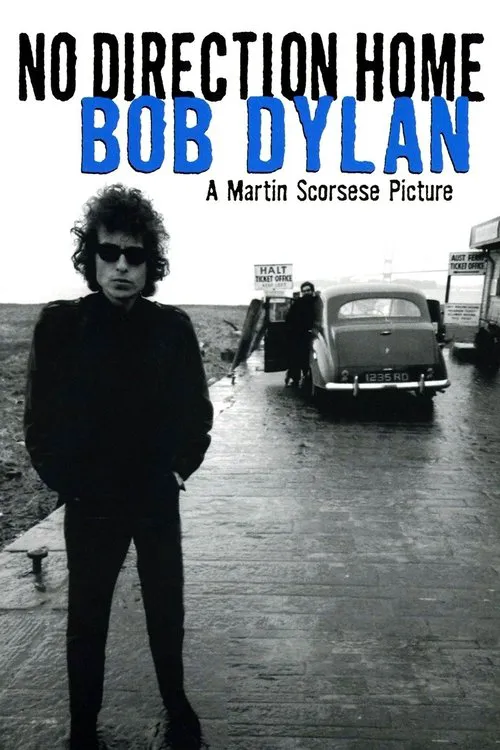No Direction Home: Bob Dylan

Plot
No Direction Home: Bob Dylan, a documentary film directed by Martin Scorsese, is a poignant and thought-provoking exploration of the life and career of the enigmatic Bob Dylan. The film takes viewers on a journey through the tumultuous and transformative years of Dylan's life, from his humble beginnings as a folk singer to his emergence as a musical icon and voice of a generation. The film begins with Dylan's early days in Hibbing, Minnesota, where he grew up surrounded by the rich musical traditions of the Midwest. We see glimpses of his early performances, where he performs folk standards like "Blowin' in the Wind" and "Girl from the North Country" with his folk group, The Shadow Blasters. These early performances showcase Dylan's unique voice, guitar skills, and captivating stage presence, which quickly garner him attention and admiration from the folk music community. As the film progresses, we witness Dylan's shift from folk singer to protest singer. In 1962, he travels to New York City, where he becomes an integral part of the city's vibrant folk scene. We see him perform at iconic venues like Gerde's Folk City and The Gaslight Cafe, where he connects with artists like Joan Baez and Dave Van Ronk. These performances showcase Dylan's growing confidence and songwriting skills, as he addresses themes of social justice, politics, and personal struggle. The film highlights Dylan's pivotal meeting with Suze Rotolo, an Italian-American poet and artist, who becomes his muse and partner. Their tumultuous relationship is marked by intense creativity, intellectual discussions, and emotional turmoil. Through Rotolo, Dylan gains insight into the world of art, literature, and politics, which inspires his writing and further solidifies his position as a protest singer. One of the most compelling aspects of No Direction Home is its portrayal of Dylan's relationship with his manager, Albert Grossman. Grossman, a shrewd businessman and savvy industry insider, sees the potential in Dylan's unique sound and talent. He becomes Dylan's mentor, guide, and confidant, helping him navigate the complexities of the music industry. However, their relationship is marred by Dylan's growing dependence on Grossman and his own insecurities about artistic control. The film's central narrative is Dylan's transition from protest singer to voice of a generation. In 1963, he releases The Freewheelin' Bob Dylan, an album that cements his position as a rising star in the folk world. The album's lyrics, which address themes of love, politics, and identity, showcase Dylan's growing confidence and songwriting prowess. We see him perform at the Newport Folk Festival, where he wins over crowds with his raw energy, charisma, and unbridled creativity. However, the film also explores the tension between Dylan's artistic vision and the commercial expectations of the music industry. In 1965, he releases Bringing It All Back Home, an album that marks a significant departure from his folk roots. The album's mix of folk, rock, and poetry reflects Dylan's experimentation with new sounds and styles, but also creates controversy and confusion among fans and critics. The final act of the film chronicles Dylan's transformation into rock star, as he embarks on a world tour in 1965-1966. We see him perform at iconic venues like Madison Square Garden and the Hollywood Bowl, where he unleashes his now-famous performance style, which combines raw energy, poetic lyrics, and boundary-pushing sonic experimentation. These performances showcase Dylan's growing confidence and artistry, as well as his increasingly iconoclastic and experimental approach to music. Throughout the film, Scorsese weaves a rich narrative that explores the complex relationships, creative influences, and artistic struggles that shaped Dylan's transformation from folk singer to rock star. The documentary is peppered with rare archival footage, insightful interviews with Dylan and those who knew him, and stunning performances that showcase his captivating stage presence. No Direction Home: Bob Dylan is a cinematic masterpiece that offers a profound and intimate portrait of a musical icon in transformation. Through its nuanced exploration of Dylan's life and career, the film challenges viewers to reevaluate the significance of his music and the enduring power of his artistic vision.
Reviews
Recommendations




